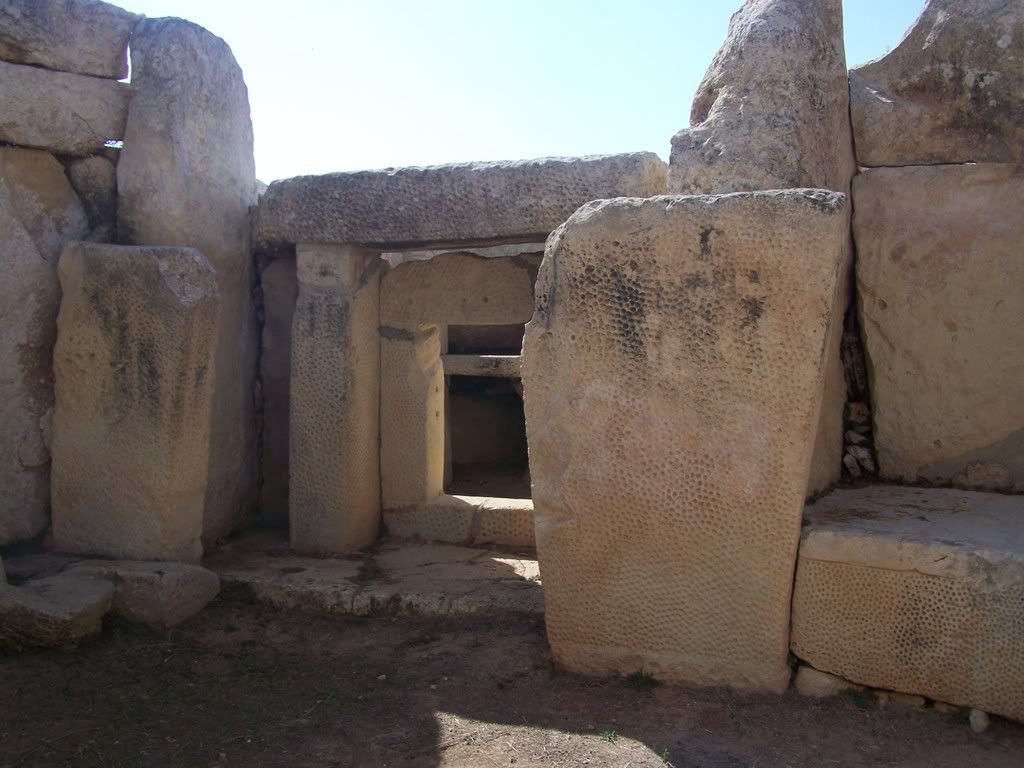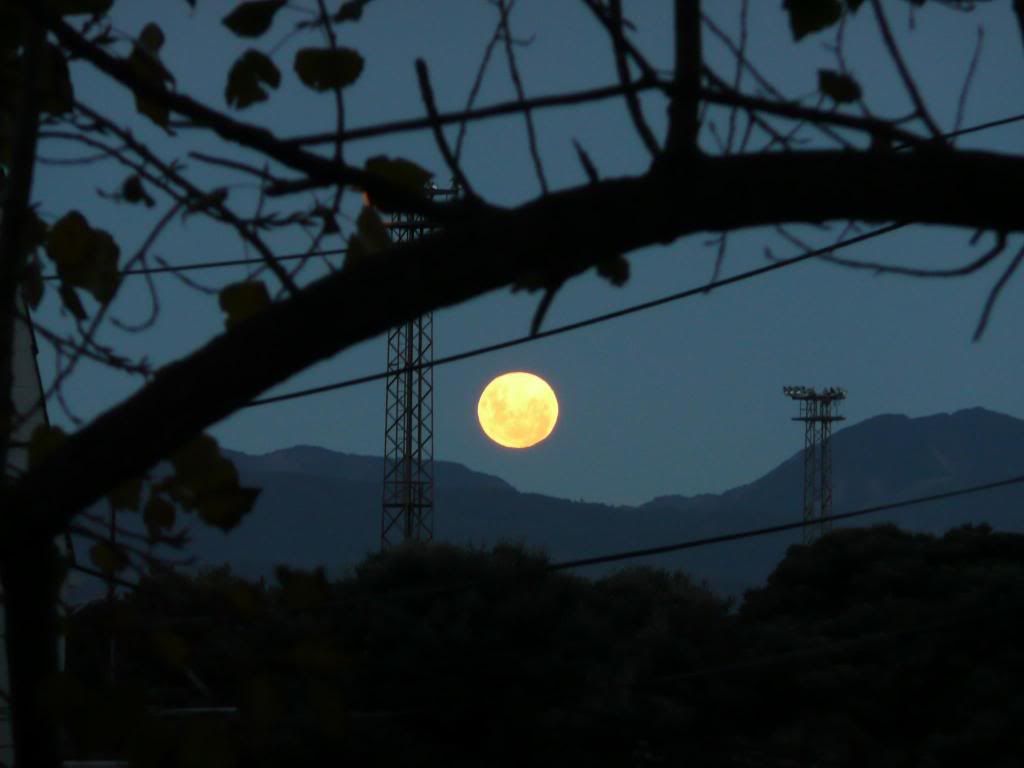Wednesday, September 24, 2014
Origins of Druidry, Wicca, OTO, Thelema, AMORC, Golden Dawn, Theosophical Society
An interesting video about modern semi-secret magical orders, and their common origin from a female perspective within this subject. AMORC stands for The Ancient Mystical Order Rosae Crucis, more commonly known as the Rosicrucian Order. Their headquarters is an Egyptian museum in San Jose, which anyone can visit (Rosicrucian Park). At the beginning, there's an interesting part about "Freemasonic Druidry." Generally, I think she hit the nail on the head with this. I would disagree with a few minor points.
The serpent symbolizes feminine-oriented knowledge and wisdom; and the male-oriented eagle allegorically takes this wisdom away for it's own purposes. However, I think there is at least some grey area.. historically-speaking.
From the video:
"In ancient times, all the tribes were matriarchal. There may have been kings, and priests, but only the queen or the priestess made him one by annointing him. It was these roles who were the spiritual leaders of the tribe. The ones who were seers, alchemists, astronomers, shamans, magicians, teachers of the esoteric and the exoteric, philosophers, midwives, herbalists, peacemakers, law keepers. These were the priestesses of old, and they all came from the noble serpent families. This was before old Patriarchal religions were invented. It was long before some of the teachings were taken by eagles and turned into religions and cults..."
Websites associated with this video:
Temple of Theola YouTube channel
SerpentBloodline.info
BeTheSolution.net
Temple of Theola
The Church of St. Mary and St. John
The International Priory of Knights Hospitaller Templar
**************************************************
Addition: I should have added that the main figure within this Celtic/Gnostic international movement is Tau Tia L Douglass of the UK, who narrated the above video.
.
Labels:
Christianity,
feminine,
Freemasonry,
Goddess,
magic,
matriarchy,
mystery schools,
Neo-Druidry,
pagan traditions,
patriarchy,
proto-Europeans,
Rosicrucianism,
science,
secret societies
Tuesday, September 23, 2014
When we have dreams with vivid imagery
Two nights ago, I had a strange dream. I don't remember enough of it to even try to interpret it. However, what I do remember were the vivid images of a totally fictitious place. I will give one example. There was what appeared to be a backyard-to-backyard alley or walkway in which one property had a type of large porch-looking glass enclosure. Initially it was a regular street with old homes, but my imagination changed it. It's like when a dream can have a duel-location. As I entered this enclosure, the late afternoon shadows coming through the windows were of a complex pattern. Are our minds able to create realistic imagery like that, or could this have been somehow adapted from real memories? I think it may be a bit of both.
Now, after two days, I seem to have forgotten how impressed I felt when I awoke right after experiencing the dramatic moving-picture-like imagery. The above image--especially around the base of the trees--gives some idea of how I saw the shadows. Double-sets of crisscrossed shadows! I do remember that much. Do our minds somehow "save" the things that we see; and are regressed in some form in our dreams? I can say that this place didn't really resemble any place that I have been in this life. A regular street with old homes and heavy trees somehow morphed into the back alleyway... but overall everything was a bit off from reality. Again, I think my mind fused together different aspects of fiction and reality.
I believe that our dreams are either 1) from ourselves; 2) occasionally from our higher-self or guardian spirit; and 3) communication from other spirits (usually friendly or related). This dream did have a purpose, but what impressed me this time and other times was the imagery. Can you think of dreams in which there where audible and moving people, places, and things that appeared real? Not "lucid dreaming," of which I haven't experienced, but fairly common dreams. One strange type of dream, which most of us have experienced a few times, is meeting and relating with someone... and then you wake up. The person... gone.
.
Monday, September 22, 2014
'Mabon Song' by Ruth Calder Murphy
Autumnal Equinox
"Autumn is the mellower season, and what we lose in flowers we more than gain in fruit." --Samuel Butler, English writer (1835-1902)
**************************************************
Ruth Calder Murphy Youtube channel
From the video description:
"Mabon Song" - By Ruth Calder Murphy: Click "Show More" for information and a copy of the lyrics. Enjoy!
"Mabon Song" is a song by Ruth Calder Murphy, with artwork also by Ruth Calder Murphy. The copyright belongs to Ruth Calder Murphy.
If you wish to use any of the material in my videos - lyrics, music or visuals - in a different context from the video itself, please feel free to contact me and always use full credits, please, including links to my web page(s) where possible.
If you've enjoyed and/or used my video, I'd love to hear from you!
I can be contacted through any of the following web pages:
www.arciemme.com
www.facebook.com/arciemmeparadoxologies
www.facebook.com/ruthsart
My Amazon page is here:
http://www.amazon.co.uk/Ruth-Calder-Murphy
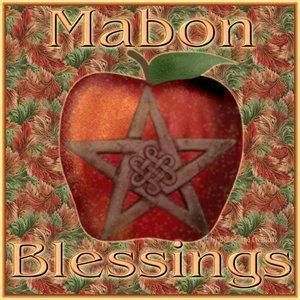 Lyrics for "Mabon Song"
Lyrics for "Mabon Song"Mabon Song
- by Ruth Calder Murphy -
Cut the corn and store the grain,
lay the Summer in the Earth,
die that life will come again;
Darkness leads to Light's rebirth.
Dance to Harvest gathered in,
Sing the song of golden corn,
Echoes of the far-off Spring,
Summer that will be re-born.
Cut the corn and store the grain,
lay the Summer in the Earth,
die that life will come again;
Darkness leads to Light's rebirth.
Dance to all that is Divine,
Sing with one exalting breath;
Join through every place and time -
Death in Life and Life in Death.
 Cut the corn and store the grain,
Cut the corn and store the grain,lay the Summer in the Earth,
die that life will come again,
Darkness leads to Light's rebirth.
Dance the dance of Evermore,
Sing the song of Everything,
Earth, air, fire and water, pour -
Harvest safely gathered in.
Cut the corn and store the grain,
lay the Summer in the Earth,
die that life will come again,
Darkness leads to Light's rebirth.
Dance to Spirit, infinite
Sing to Air, Fire, Water, Earth,
Dance the Day and dance the Night,
Darkness leads to Light's rebirth.
Cut the corn and store the grain,
lay the Summer in the Earth,
die that life will come again,
Darkness leads to Light's rebirth.
**************************************************
'The 2014 Autumnal Equinox Arrives'
By Emily Poore - SkyAndTelescope.com - September 22, 2014
What is the "fall equinox" — and how do we know when it happens?
To those who’ve unpacked their winter coats, closed their windows at night, and felt that telltale crispness in the air, it seems that autumn has already started. Astronomically speaking, however, the fall season only comes to the Northern Hemisphere on Tuesday, September 23rd at 2:29 Universal Time (10:29 p.m. EDT on Monday, the 22nd). At that moment, the Sun shines directly on Earth’s equator, heading south as seen in the sky. For us northerners, this event is called the autumnal equinox.
This seems awfully precise for seasons that gradually flow from one to the next, but the reason astronomers regard this event as the “End of Summer” and “Beginning of Fall” is because it is marked by a key moment in Earth’s annual orbit.
The apparent position of the Sun in our sky is farther north or farther south depending on the time of year due to the globe's axial tilt. Earth's rotational axis does not point straight up and down, like the handle of a perfectly spinning top, but is slanted about 23½° with respect to our orbit around the Sun.
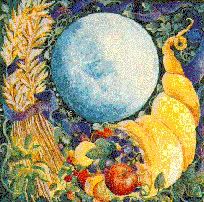 Another way to think of this is that the plane defined by Earth's orbit around the Sun (called the ecliptic) is tilted with respect to the planet's equator. From our perspective, the Sun follows the ecliptic in its path through the sky throughout the year. Each day the Sun's daily arc moves northward or southward, depending on the time of the year. To observers at northern latitudes (in the U.S., Canada, and Europe, for example), the Sun appears to sneak higher in the sky from late December to late June, only to drop down again from late June through late December. The equinox occurs when the Sun is halfway through each journey.
Another way to think of this is that the plane defined by Earth's orbit around the Sun (called the ecliptic) is tilted with respect to the planet's equator. From our perspective, the Sun follows the ecliptic in its path through the sky throughout the year. Each day the Sun's daily arc moves northward or southward, depending on the time of the year. To observers at northern latitudes (in the U.S., Canada, and Europe, for example), the Sun appears to sneak higher in the sky from late December to late June, only to drop down again from late June through late December. The equinox occurs when the Sun is halfway through each journey.This axial tilt also produces our seasons. When Earth is on one side of its orbit, the Northern Hemisphere is tipped toward the Sun and receives more direct solar rays (and more daylight hours) that produce the familiar climes of summer. Six months later, when Earth is on the opposite side of its orbit, the Northern Hemisphere is tipped away from the Sun. The slanting solar rays heat the ground less and daylight is shorter, producing the colder winter season.
The same pattern occurs, but in reverse, for the Southern Hemisphere. There September’s equinox marks the beginning of spring, while March’s equinox signals the start of fall. Christmas is a warm holiday in Sydney, Australia. For those living in equatorial regions, however, there are usually only two recognizable seasons: wet and dry; and the days themselves vary less in length.
Several other noteworthy situations happen on the equinoxes:
* Day and night are nearly the same length; the word “equinox” comes from the Latin aequinoctium, meaning “equal night,” according to the Oxford English Dictionary. However, a poke around your almanac will show that day and night are not precisely 12 hours each, for two reasons: first, sunrise and sunset are defined as when the Sun’s top edge — not its center— crosses the horizon. Second, Earth’s thick atmosphere refracts the Sun’s apparent position slightly when the solar disk sits very low on the horizon.
* The Sun rises due east and sets due west, as seen from everywhere on Earth; the equinoxes are the only times of the year when this occurs.
* Should you be standing on the equator, the Sun would pass exactly overhead at midday. Were you standing at the North Pole or South Pole, the Sun would skim completely around the horizon.
.
Labels:
autumnal equinox,
earth,
earth seasons,
Mabon,
music,
neopagan,
weather,
wheel of the year
Friday, September 5, 2014
'Jeremiah Johnson' - movie review
'Jeremiah Johnson' (Wikipedia)
Jeremiah Johnson is a 1972 western film directed by Sydney Pollack and starring Robert Redford as the title character and Will Geer as "Bear Claw" Chris Lapp. The film has been said to have been based in part on the life of the legendary mountain man Liver-Eating Johnson, based on Raymond Thorp and Robert Bunker's book 'Crow Killer: The Saga of Liver-Eating Johnson' and Vardis Fisher's 'Mountain Man'.
The script was written by John Milius and Edward Anhalt; the film was shot at various locations in Redford's adopted home state of Utah. It was entered into the 1972 Cannes Film Festival.
I try to be somewhat objective when typing movie reviews, but I think I will put my own stamp on this one. I saw a lot of symbolism that I wanted to delve into. I think 'Jeremiah Johnson' was a great movie, an original western, and it's a distinctly Ameican story. When I viewed it again recently however, I saw even deeper connections. I saw Odinic connections for one thing. The rugged White characters, with their long beards and survivalist mindset, reminded me of the perception of what Germanic tribesman were like. Perhaps something like the Langobards, and the Camunians were a mountain people. Also, the Amerindians represented the northern Mongolians who have historically shared the northern stretches of the Earth. The "son" at the end of Johnson reminded me of a Norse or Viking name, of which it probably has strong connections to. One scene referred to "Jeremiah" as a "Christian name," and I suppose that it could be said that "Johnson" was symbolically his "Odinic name." The movie portrays pure evolutionary struggle.
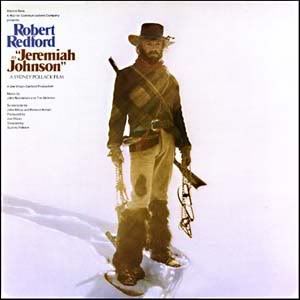
All of the actors and actresses were good in their roles.. and I thought that the three primary mountain men (Robert Redford, Will Geer, and Stefan Gierasch as Del Gue) were great.. real "characters" in the other sense of the word. Robert Redford and Will Geer are/were so totally different in every way than their characters here... the magic of the movies. The Pagan Amerindians, as well as the White mountain men (my symbolic "Odinic" survivalists) were pure fighting machines.. and I think the movie gave at least a glimpse of that. Apparently, the real man about whom the film was based, "Liver-Eating Johnson," was so fearsome that the Amerindians--rather than hate him--actually honored him. At one point, Johnson asked a settler what the neat collection of artifacts were near his cabin, and the settler told him that it was a monument to him (Johnson). "Some say that you're dead on account of this. Some say that you'll never die on account of this."
There was an actual Del Gue, who was his trapping partner according to the real account. There were a lot of French who came into probably Quebec mostly, and worked their way down into the United States frontiers like the Rocky Mountains, and established rural trade economies. The Rocky Mountains encompass such a vast highlands region in the center of North America, not just Colorado. They stretch from northern New Mexico to northern British Columbia. According to Wikipedia: Mountain men were most common in the North American Rocky Mountains from about 1810 through the 1880s (with a peak population in the early 1840s). The movie at times, sort've symbolically, showed the Rocky Mountains as "the top of the world"... a tremendous allure.
"The Rocky Mountains is the marrow of the world. I ain't ever seen 'em, but my heart tells me that the Andes is foothills and the Alps are for children to climb." --Del Gue
The soundtrack is worth mentioning. It's a blend of American folklore, the spiritual, and nature... and it worked well within the movie. It reflected both nature's harmonious and innocent side.. and it's harsh and violent side. The bear, to me, represents these dual sides of nature. The movie begins with Jeremiah Johnson arriving by river boat at a trading post at the base of the mountains, ready to begin his trek. Soon, a particular wise-looking Amerindian observes Johnson appearing somewhat buffoonish as he tries to catch fish in a river amid the snow. Much later, well after Johnson has been transformed into a legend, he runs into that same Amerindian... but I don't want to give away the powerful scene.
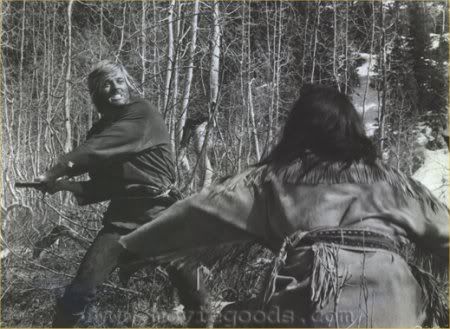 Numerous scenes during the winter show how harsh and lonely mountain life can be. The vast majority of people today could not survive long if they were placed in that environment, no matter how well equipped they were. The log cabins shown in the movie were great, with a particular wide and low to the ground design. To me, symbolically, this type of transformation of a person is well represented by the "werewolf" concept. Even a soft person could be transformed into a rough, survivalist, fighter if they were pushed to it... and they had the will to survive. In one scene, after he had to fight for his life, he gave out a loud scream... perhaps symbolically like a wolf's howl. A wolf can seem sort've happy-go-lucky... yet can become a ferocious fighter at the drop of a hat. The North American timber wolf is originally from Europe as their DNA has shown; having crossed an ice-bridge long ago. Coyotes are native to North America.
Numerous scenes during the winter show how harsh and lonely mountain life can be. The vast majority of people today could not survive long if they were placed in that environment, no matter how well equipped they were. The log cabins shown in the movie were great, with a particular wide and low to the ground design. To me, symbolically, this type of transformation of a person is well represented by the "werewolf" concept. Even a soft person could be transformed into a rough, survivalist, fighter if they were pushed to it... and they had the will to survive. In one scene, after he had to fight for his life, he gave out a loud scream... perhaps symbolically like a wolf's howl. A wolf can seem sort've happy-go-lucky... yet can become a ferocious fighter at the drop of a hat. The North American timber wolf is originally from Europe as their DNA has shown; having crossed an ice-bridge long ago. Coyotes are native to North America.Part of the transformational concept is that a person living in the wild develops a "sixth-sense," which the movie portrayed. "Bear Claw," who became Johnson's mentor, said "The mountain has its own ways." I think he meant the cycle of nature, the cycle of life, the natural process of things. In this world, nature was in full command. That process is enhanced even more in the harsh mountains. There's a certain inherent morality to nature.
There is a book about the real person named John Johnson, known as Liver-Eating Johnson. It's called 'Crow Killer: The Saga of Liver-Eating Johnson'. The "Crows" were one of the Amerindians tribes, and he went to war with them after they killed his wife and unborn child. That's the account, and the larger "who did what to whom" is something that could be discussed all day. The struggle did symbolize the overall struggle between the two "northern races" over the course of history. Genghis Khan was a northern Mongol who invaded Europe. The earliest fossils in at least North America were proto-European ("Kennewick Man") and were apparently defeated by the incoming Mongols. However, basically these mountain men conducted peaceful trade with the native tribes, and there were missionaries, trading posts, etc.
The other book that the film was based on was 'Mountain Man', a fictional
 account of that period. I still remember that up to the late 70s, when someone liked a movie, there were no DVDs or even VHS tapes to buy. They would buy soundtracks, books, posters, or novelty items about a popular movie. This movie was popular, as it was the seventh highest grossing film in 1972.
account of that period. I still remember that up to the late 70s, when someone liked a movie, there were no DVDs or even VHS tapes to buy. They would buy soundtracks, books, posters, or novelty items about a popular movie. This movie was popular, as it was the seventh highest grossing film in 1972.I don't want to give away too much of the plot, but at one point the Crows kill Johnson's family in what was a revenge attack from their point of view. Johnson--my symbolic Odinic survivalist--gives them what appeared to be a "Viking funeal" by assembling the bodies and burning the cabin. I know, it probably wasn't intended to symbolize that... but I saw Odinic symbolism... or Pagan Amerindian symbolism for that matter. At one point, Johnson warned U.S. Cavalrymen not to enter Crow burial grounds... as they "guarded it with spirits."
The Del Gue character was a real wildman, with a real way with words. Near the end of the movie, he is riding away and gives a particularly great rant about being a mountain man... and it only really makes sense upon actually hearing it. Initially, his gregarious personality and headstrong manner overwhelmed Johnson... who was still a novice. However, upon meeting Johnson much later on, he appears somewhat in awe of the legend.. "Jeremiah Johnson." There were a lot of subtle messages like this that perhaps can't easily be put into words... but they helped make it a great movie.
Below, the theme song from the movie: 'The Way That You Wander'
The way that you wander is the way that you choose,
The day that you tarry is the day that you lose.
Sunshine or thunder, a man will always wonder.
Where the fair wind blows.
At the end of the movie... one extra line is added to the lyrics...
“And some folks say…he’s up there.. still…”
.
Labels:
American history,
Amerindians,
Asatru,
Colorado,
evolutionary struggle,
films,
movies,
nature,
North America,
Odinic,
pagan,
Rocky Mountains,
United States
Tuesday, September 2, 2014
Ancient proto-European Megalithic Temples investigated on History Channel 2 this Friday
This Friday on History Channel 2 ("H2"), on the program 'In Search of Ancient Aliens', the Megalithic Temples of Malta will be featured. These eleven temples may be an insight into proto-European culture and spirituality. The early stock of Malta was proto-European; Phoenicians, Greeks, and Romans came later. Giorgio Tsoukalos from 'Ancient Aliens' (the guy with the funny hair) is the host of the program, and his mentor Erich von Däniken is a frequent guest. I remember when I was very young, my father had one of von Däniken's books, and I tried to make sense of it. It's amazing how his work has come into the mainstream over the years.
From Wikipedia: "The Megalithic Temples of Malta are the eleven prehistoric monuments, of which seven are UNESCO World Heritage Sites, built during three distinct time periods between 3000 BC and 700 BC approximately. They have been claimed as the oldest free-standing structures on Earth, although the largely buried Göbekli Tepe complex is now believed to be older. Archaeologists believe that these megalithic complexes are the result of local innovations in a process of cultural evolution. This led to the building of several temples of the Ġgantija phase (3600-3000 BC), culminating in the large Tarxien temple complex, which remained in use until 2500 BC. After this date, the temple building culture disappeared."
 |
| Excavation on the "Pyramid of the Moon" in 2010. |
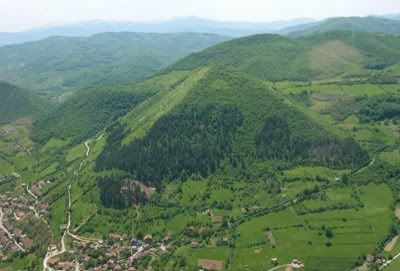 |
| Bosnian "Pyramid of the Sun" |
.
Labels:
ancient history,
archeology,
Bosnia,
Malta,
proto-Europeans
Monday, September 1, 2014
Final "Supermoon" of 2014 will be this Monday's Harvest Moon
Excerpts from: 'Full Moon, Supermoon 2014 and 2015 Calendar: Rest of Dates for This Year, and the Next'
By Zachary Stieber - Epoch Times - July 13, 2014
Supermoons are actually a new or full moon which occurs when the moon is closer to the Earth than usual.
The remaining one is scheduled for September 8.
The full moon dates are scheduled for:
September 8, Full Harvest Moon, 9:38 p.m. EDT
October 8, Full Hunter’s Moon, 6:51 a.m. — the remaining “blood moon” this year
November 6, Full Beaver Moon, 5:23 p.m.
December 6, Full Cold Moon, 7:27 a.m.
2015
For next year, there will be another six supermoons–on January 20, February 18, March 20, August 29, September 28, October 27. All of these are news moons.
There will be two more “blood moons” in 2014–on April 4 and September 28.
Full moons are slated for January 5, February 3, March 5, April 4, May 4, June 2, July 2, July 31, August 14, September 13, October 13, November 11, and December 11.
**************************************************
9-4-14 Correction: Full Moons always begin on their exact date, and rollover onto the AM of the next date. Therefore this coming Moon will be on the day of it's honor.. Monday... "Moon Day." The ancient pre-Roman word for Moon was "Mon" or "Mun." I don't know if it can be determined whether or not these words were originally proto-European/Alpine or Teutonic/Continental Celt.
.
Subscribe to:
Posts (Atom)


